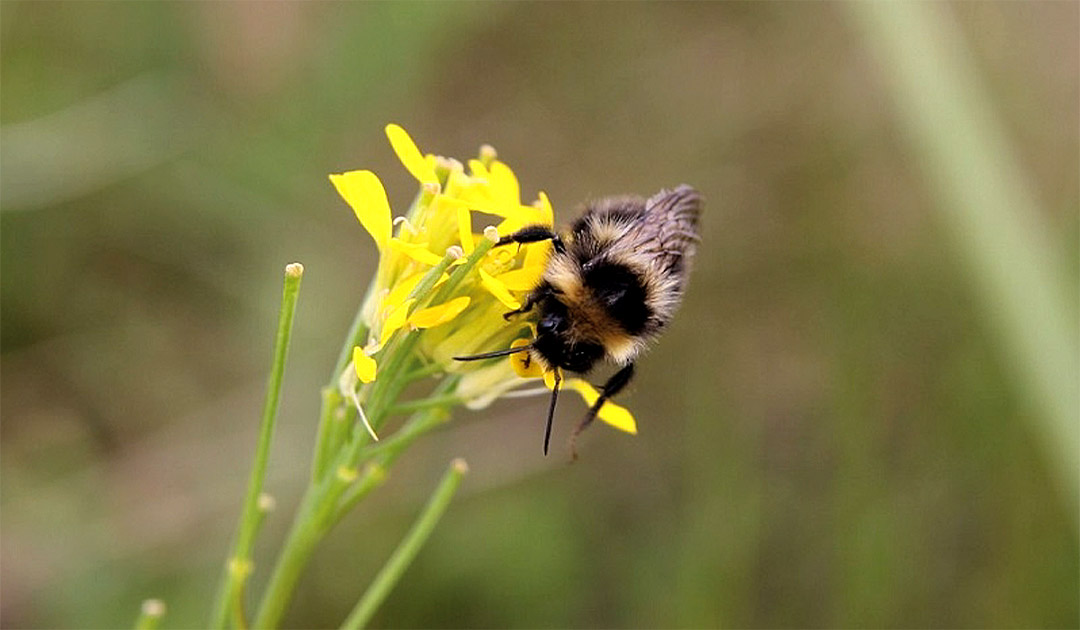
Rising air and ocean temperatures, loss of sea ice, more frequent precipitation and forest fires, and other changes associated with climate change are putting increasing pressure on animals, plants, and people in the Arctic. That’s according to the new Arctic Report Card, an annual report from the National Oceanic and Atmospheric Administration (NOAA) on the state of the changing Arctic. In addition to new data on surface temperature, snow cover, tundra and other factors, the report also reveals that these are lacking for pollinating insects in the Arctic. Far too little is known about bees, butterflies and flies – especially about how they respond to climate change.
The dramatic decline of insects, not only as pollinators but also as an important food source for birds, bats, reptiles and others, is unmistakable in much of the world. But what about in the Arctic? This question was also posed by the team of authors who wrote the report on Arctic pollinators as part of the Arctic Report Card.
Their results are quite sobering. This is because there is not even enough data on the distribution, ecology, and respective conservation status of Arctic insects to track long-term trends. However, as in other regions, they play an important role as pollinators in terrestrial ecosystems and contribute to the food systems of Arctic indigenous peoples and Arctic residents.
There are 14 known bee and 17 butterfly species in the high Arctic, and 58 known bee and 95 butterfly species in the rest of the Arctic, the report says. How many fly species pollinate plants is unknown.
Arctic pollinators are sensitive bio-indicators of ecological responses to climate change, and some of them respond strongly to changing conditions, the international research team writes in its report. But comprehensive studies on them are lacking. Syd Canning, a scientist with Environment and Climate Change Canada and co-author of the report, highlights a significant gap in knowledge about long-term trends in pollinators in the Arctic and how they are being affected by rapid climate change.

“Pollinators, I think, more and more are being recognized as being really important in both general ecosystems and in sort of human food supply,” Canning said. “In the Arctic, pollinators are really important in creating a good berry supply, which is good for animals, birds, people and the whole Arctic ecosystem.”
Particularly in the North American Arctic, data on pollinating insects are limited. To expand knowledge of species distribution and habitat, researchers launched the Alaska Bee Atlas in 2020. The Arctic BIOSCAN project is building capacity for community- and DNA-based biodiversity monitoring in the Canadian Arctic.
In the Nordic region, on the other hand, the data situation is described as solid, but information on the development of abundance and diversity in general is lacking. National pollinator monitoring programs in Norway, Sweden and Finland should improve the situation here. The most comprehensive findings, with data from the last 25 years, come from the Zackenberg Research Station in East Greenland, which has recorded annual trap catches of insects since 1996. Populations of many species have declined since then.
Particularly high species richness has been documented in the Russian Arctic, but systematic monitoring programs are lacking here. In particular, the bumblebee Bombus glacialis, which occurs on the islands of Wrangel, Novaya Zemlya and Kogulyev, is highly threatened by climate change.

At the February 2022 Arctic Pollinator Monitoring Workshop of the Conservation of Arctic Flora and Fauna (CAFF) Working Group, participants identified urgent research needs such as coordinated long-term monitoring, strategic inventories, and collaboration with indigenous peoples to improve understanding of climate change impacts on pollinators and their habitats. The measures, some of which are already being developed, should lead to effective protection strategies.
Julia Hager, PolarJournal
Link to the study: https://arctic.noaa.gov/Report-Card/Report-Card-2022/ArtMID/8054/ArticleID/1003/Arctic-Pollinators
More on the subject:





